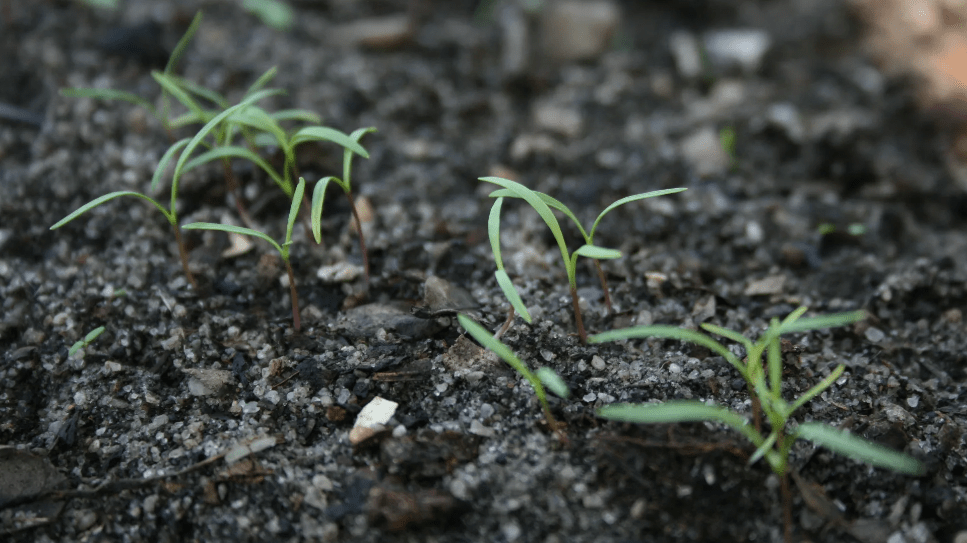
Master Carrot Sprouting: Tips for a Healthy and Abundant Harvest
Are you ready to take your gardening skills to the next level and master the art of carrot sprouting? Look no further! In this blog post, we will provide you with expert tips and techniques for successfully growing and harvesting carrots in your garden. Say goodbye to wilted, stunted carrots and hello to a healthy and abundant harvest that will have your family and friends begging for more. Whether you’re a seasoned gardener or a beginner, these tips will ensure that you enjoy the freshest and most delicious carrots all season long. So, grab your gardening gloves and get ready to become a carrot-sprouting master!
Table of Contents
ToggleUnderstanding Carrot Sprouting
A. What is carrot sprouting?
Carrot sprouting is the process of growing and nurturing carrots from seed to harvest. It involves proper soil preparation, watering, and care to ensure healthy and abundant growth.
B. The growth stages of a carrot from seed to harvest
The growth stages of a carrot from seed to harvest are a truly rewarding experience. From the moment the seed is planted, to the first tiny sprout breaking through the soil, to the vibrant green foliage that signals the imminent harvest, each stage is a testament to the patience and effort you’ve put into nurturing your carrots. And let’s not forget the satisfaction of pulling those freshly grown carrots from the earth and enjoying their crisp, sweet flavor straight from your garden. It’s a truly fulfilling journey that every gardener should experience. So, don’t miss out on the joy of carrot sprouting – get ready to roll up your sleeves and get your hands dirty in the garden!
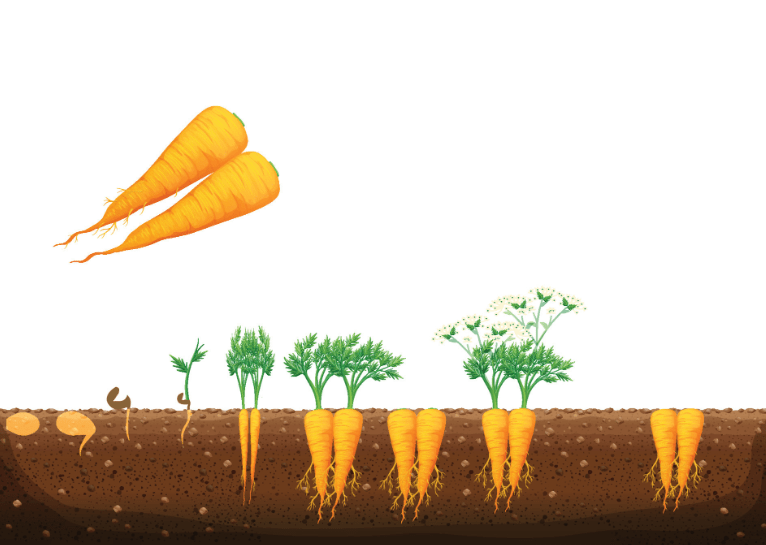
C. Benefits of starting with carrot sprouts vs. direct sowing
Starting with carrot sprouts instead of direct sowing has several benefits. Firstly, it allows you to get a head start on the growing season, as sprouts can be started indoors or in a greenhouse before the last frost. This means you can enjoy fresh, homegrown carrots earlier in the season. Secondly, starting with sprouts gives you a better chance of success, as it allows you to control the growing conditions and protect the delicate seedlings from pests and harsh weather. Additionally, transplanting sprouts can help reduce the risk of overcrowding and competition among carrots, leading to healthier and more productive plants. So, if you want to ensure a successful and bountiful carrot harvest, starting with sprouts is the way to go. Happy gardening!
Choosing the Right Carrot Varieties
A. Overview of popular carrot varieties for home gardens
When it comes to choosing the right carrot varieties for your home garden, there are a few key considerations to keep in mind. First and foremost, you’ll want to think about the size and shape of the carrots you prefer. Do you like long and slender carrots, or do you prefer shorter, rounder varieties? Additionally, consider the color of the carrots – from traditional orange to vibrant purple or even white, there are plenty of options to choose from.
Another important factor to consider is the growing conditions in your area. Some carrot varieties are better suited to cooler climates, while others can handle hot and dry conditions. By selecting varieties that are well-matched to your local climate, you can increase the likelihood of a successful harvest.
Finally, think about how you plan to use your carrots. Are you looking for a variety that’s perfect for snacking, or do you want carrots that will hold up well in soups and stews? There are varieties that are ideal for each of these purposes, so it’s worth considering how you’ll be using your homegrown carrots.
Ultimately, the best carrot varieties for your home garden will depend on your personal preferences and growing conditions. With a little research and careful consideration, you can select the perfect varieties for a bountiful and delicious carrot harvest. Happy gardening!
B. Best carrot varieties for sprouting
Best carrot varieties for sprouting are the ones that are high in nutrients and have a good germination rate. Look for varieties such as Napoli, Bolero, or Thumbelina for sprouting. These varieties are known for their tender, sweet flavor and are perfect for adding to salads, sandwiches, or snacking on their own. Plus, they are easy to grow and produce a high yield, making them a great choice for home gardeners.
So, if you’re looking to enjoy the benefits of homegrown sprouted carrots, be sure to choose varieties that are known for their taste, texture, and ease of growth. With the right selection, you’ll be well on your way to enjoying a bountiful harvest of delicious and nutritious sprouted carrots. Happy planting!
C. Factors to consider when choosing a variety (climate, soil type, etc.)
When choosing a variety of carrots for sprouting, it’s important to consider factors such as climate, soil type, and growing conditions. Understanding the specific requirements of each variety will help ensure a successful harvest of delicious, tender sprouted carrots. Look for varieties that are well-suited to your local climate and soil type, as this will make it easier to achieve optimal growth and yield. Additionally, consider factors such as disease resistance and overall performance in your specific growing conditions. By taking these factors into account, you can select the best variety for sprouting that will thrive in your garden. Happy planting!
Preparing Your Garden or Containers
A. Soil preparation: importance of loose, well-drained soil
When preparing your garden or containers for planting, soil preparation is key to success. Loose, well-drained soil is crucial for healthy plant growth and optimal root development. By taking the time to properly prepare your soil, you are setting the stage for a bountiful harvest. Double digging or tilling the soil can help improve its structure and promote better drainage. Amending the soil with organic matter, such as compost or aged manure, can also enhance its fertility and overall health. By investing time and effort into soil preparation, you are laying the foundation for a thriving garden that will reward you with delicious, nutritious produce. So, roll up your sleeves and get ready to give your plants the best possible start! Happy gardening!
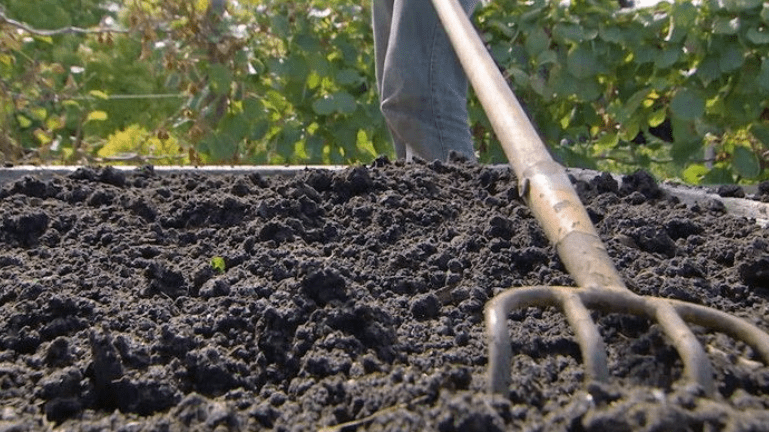
B. Ideal pH levels and soil amendments
Ideal pH levels and soil amendments are crucial for the success of your garden. By testing the pH levels of your soil and making necessary adjustments, you can create the optimal growing environment for your plants. Adding lime to raise the pH or sulfur to lower it can ensure that your plants have access to the nutrients they need to thrive. Additionally, incorporating specific soil amendments, like bone meal for phosphorus or kelp meal for potassium, can further enhance the fertility of your soil. By taking the time to fine-tune your soil composition, you are setting yourself up for a productive and healthy garden. So, let’s get to work and give your plants the ideal growing conditions they deserve! Happy gardening!
C. Choosing between raised beds, traditional garden plots, or containers
When it comes to choosing the right growing environment for your plants, the possibilities are endless! Whether you opt for raised beds, traditional garden plots, or containers, each option has its own unique set of advantages. Raised beds offer better drainage and warmer soil, while traditional plots provide ample space for larger plants and easier access for maintenance. Containers, on the other hand, are perfect for small spaces and allow for easy mobility.
Consider the specific needs of your plants and your own gardening preferences when making this decision. Think about the amount of space you have, the type of plants you want to grow, and the level of maintenance you are willing to commit to. By carefully considering these factors, you can choose the perfect growing environment that will set your plants up for success.
So, whether you prefer the convenience of containers, the versatility of raised beds, or the traditional charm of garden plots, rest assured that your plants will thrive as long as you provide them with the care and attention they need. Happy gardening!
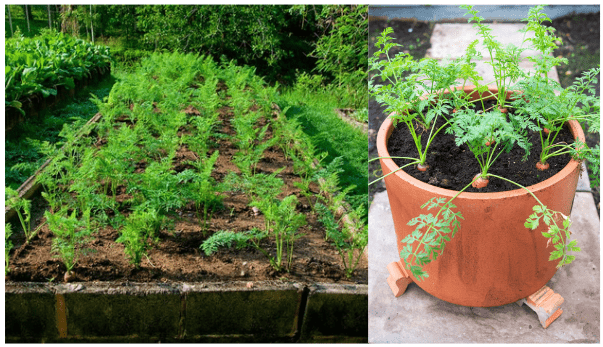
Planting Carrot Seeds
A. Timing: When to plant carrot seeds for optimal sprouting
I’m so glad you’re considering planting carrot seeds! The timing for planting carrot seeds is crucial for optimal sprouting. Carrots should be planted in the spring, as soon as the ground can be worked, for the best results. Carrots thrive in cool weather, so early spring is the perfect time to sow your seeds. Wait until the soil has warmed to at least 50 degrees Fahrenheit for the best germination. So, get those carrot seeds in the ground as soon as you can for a bountiful harvest later on. Your patience and careful timing will pay off with delicious, homegrown carrots. Happy planting!
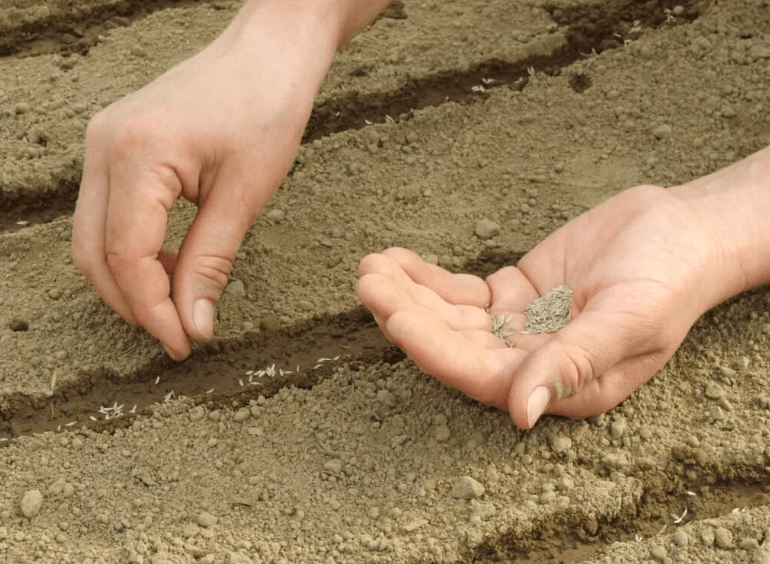
B. Step-by-step guide to planting carrot seeds
- Choose a location in your garden that receives full sunlight and has well-draining soil.
- Prepare the soil by removing any debris and breaking up any clumps. Add compost or organic matter to improve soil fertility.
- Plant the carrot seeds about 1/4 inch deep and 1 inch apart in rows, or sprinkle them in a wide band for easier harvesting later on.
- Water the seeds gently but thoroughly after planting to help them settle into the soil.
- Keep the soil consistently moist but not waterlogged as the seeds germinate and the carrots begin to grow.
- Thin the seedlings to about 2-3 inches apart once they are about 2 inches tall to give them room to grow.
- Mulch around the plants to help retain moisture and suppress weeds.
- Keep an eye out for pests and diseases, and address them promptly to ensure a healthy crop.
- Harvest your carrots when they reach the desired size, usually about 70-80 days after planting.
By following these steps, you can successfully plant and grow your own delicious, fresh carrots right in your own backyard. So don’t wait – get those seeds in the ground and enjoy the satisfaction of growing your own food!
Caring for Carrot Sprouts
A. Watering techniques: frequency and amount
The key to successful carrot growth is to ensure the soil is consistently moist, but not waterlogged. Water your carrot sprouts regularly, especially during dry periods, to promote healthy root development and prevent the carrots from becoming tough and woody. Aim to water deeply, but infrequently, to encourage deep root growth. And remember, mulching around the plants will help retain moisture, reducing the need for frequent watering.
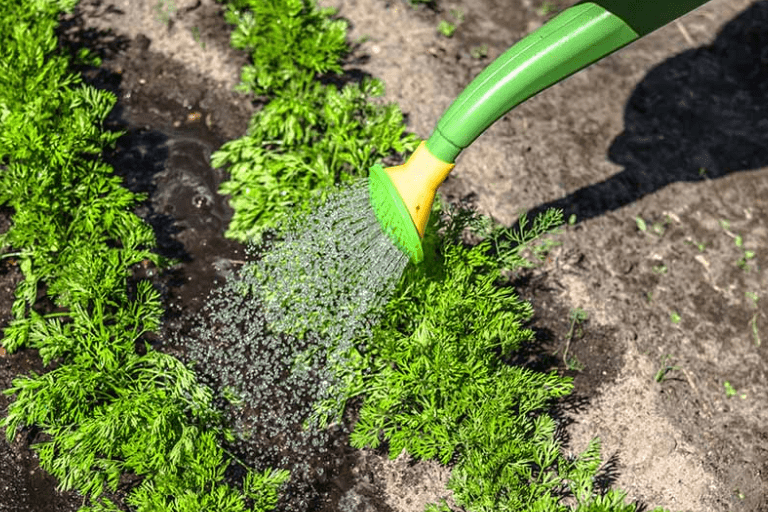
B. Thinning seedlings for better growth
Thinning your carrot seedlings is crucial for promoting healthy and robust growth. It may seem counterintuitive to remove some of the seedlings, but overcrowding can lead to stunted growth and malformed carrots. By thinning the seedlings to about 2-3 inches apart, you allow the remaining plants to have ample space to develop strong and healthy roots. This will ultimately result in larger and better-shaped carrots for you to enjoy. So don’t hesitate to thin out those seedlings and give your carrots the space they need to thrive!
C. Fertilizing tips for healthy sprouts
When it comes to growing healthy and vibrant sprouts, fertilizing is key. Providing your sprouts with the right nutrients will ensure that they have the strength and vitality to grow into strong and productive plants. Whether you choose to use organic or synthetic fertilizers, it’s important to follow the recommended application rates and frequency to avoid over-fertilizing, which can harm your plants. Additionally, be sure to choose a fertilizer that is specifically formulated for young, tender plants to avoid burning or damaging them. By fertilizing your sprouts properly, you are setting them up for success and ensuring a bountiful harvest. So don’t skimp on the fertilizing – your sprouts will thank you for it!
D. Pest and disease management for young carrot plants
When it comes to managing pests and diseases for young carrot plants, it’s crucial to be proactive and vigilant. Inspecting your plants regularly for any signs of pests or disease is essential in catching and addressing any issues early on. Utilizing natural methods such as hand-picking pests or introducing beneficial insects can help control pest populations without resorting to harmful chemicals. Additionally, practicing good crop rotation and maintaining proper spacing between plants can help prevent the spread of diseases. It’s also important to keep the area around your carrot plants free of weeds, as weeds can harbor pests and diseases. By staying ahead of potential pest and disease problems, you can ensure that your young carrot plants stay healthy and thrive. Don’t let pests and diseases sabotage your hard work – take proactive measures to protect your plants!
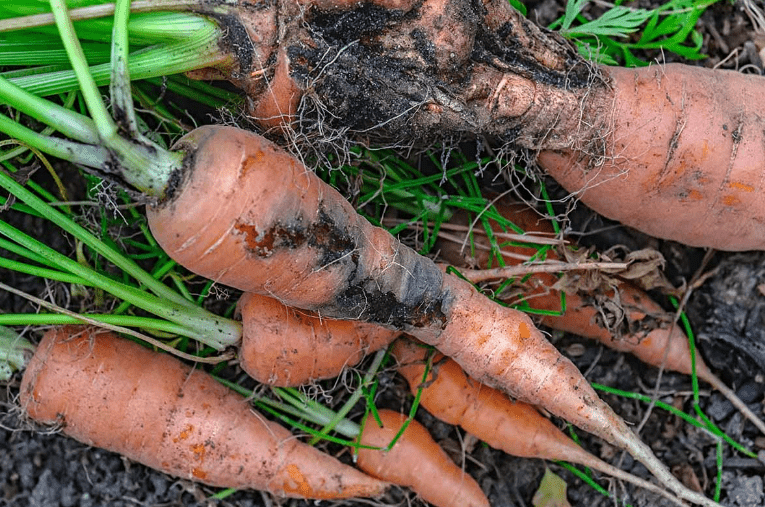
Optimizing Growth Conditions
A. Light requirements for carrot sprouting
Carrot seeds should be planted in full sun to partial shade, receiving at least 6-8 hours of sunlight per day. In order to optimize growth conditions for your carrot sprouts, it’s crucial to ensure they are getting the right amount of sunlight. Without enough light, carrot sprouts may become weak and spindly. By providing adequate sunlight, you can promote healthy and robust growth in your carrot plants. So, make sure to plant them in a spot with plenty of sunshine and watch them thrive!
B. Maintaining optimal temperature and humidity levels
To ensure the best growth conditions for your carrot sprouts, it’s essential to maintain optimal temperature and humidity levels. Carrots prefer cooler temperatures, ideally between 60-70°F, and they thrive in well-drained soil with moderate humidity. By providing the right environment for your carrot sprouts, you can encourage strong root development and healthy foliage. So, be sure to monitor temperature and humidity levels regularly and make any necessary adjustments to create the perfect growing conditions for your carrots. With the right care, you’ll be enjoying a bountiful harvest in no time!
C. Mulching and weed control for healthy growth
Mulching and weed control are crucial for ensuring the healthy growth of your plants. Mulching helps to retain moisture in the soil, regulate temperature, and suppress weed growth, while weed control prevents competition for nutrients and water. By implementing these practices, you can create an optimal growing environment for your plants, allowing them to thrive and reach their full potential. So, be sure to mulch around your plants and regularly remove any weeds to give them the best chance at healthy growth. Your efforts will pay off with a beautiful and productive garden.
Troubleshooting Common Issues
Troubleshooting Common Issues such as poor growth, disease, and pest infestations can be avoided with proper mulching and weed control. With the right care, you’ll be enjoying a bountiful harvest in no time! So invest in mulch and take control of those pesky weeds to set your garden up for success. Your efforts will be rewarded with healthy, vibrant plants and an abundance of fresh produce. Don’t wait any longer, start mulching and controlling those weeds today and watch your garden flourish!
Harvesting Carrots
A. When to harvest for the best flavor and texture
Harvesting your carrots at the right time is crucial to ensuring the best flavor and texture. To achieve that perfect crispness and sweetness, wait until your carrots have reached their full size and color. This is usually about 60-80 days after planting, depending on the variety. Test the carrots by gently pulling one from the soil. If it easily comes out and the top part of the carrot is about ¾ of an inch in diameter, then it’s ready to be harvested. Don’t wait too long, as over-matured carrots can become woody and lose their flavor. So don’t miss out on the delicious taste of perfectly ripe carrots. Harvest at the right time and enjoy the fruits of your labor!
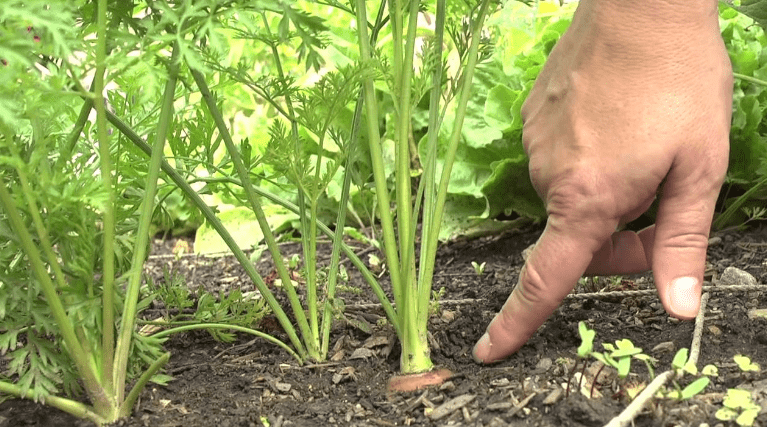
B. How to properly pull carrots without damaging the roots
Pulling carrots at the right time is crucial to ensuring their delicious flavor and perfect texture. When you gently pull a carrot from the soil and it easily comes out with the top part measuring about ¾ of an inch in diameter, that’s your cue to harvest. Don’t wait too long, as over-matured carrots can become woody and lose their delectable taste.
So, don’t miss out on the opportunity to savor the sweet and tender goodness of perfectly ripe carrots. Take the time to check and harvest them at just the right moment. Your taste buds will thank you! And when you do pull them, be sure to do so carefully to avoid damaging the delicate roots. With these simple steps, you can revel in the satisfaction of enjoying the fruits of your labor. Happy harvesting!
C. Storing and preserving your carrot harvest
Now that you’ve put in the effort to grow and harvest those delicious carrots, it’s important to make sure you store and preserve them properly so that you can enjoy them for as long as possible. Don’t let all that hard work go to waste!
First, gently brush off any excess dirt from the carrots, but don’t wash them as the moisture can cause them to spoil more quickly. Then, trim the greens to about an inch from the top of the carrot, leaving a small amount to help retain moisture.
Next, find a cool, dry place to store your carrots. A root cellar or a refrigerator with high humidity is ideal, but if those aren’t options, you can also store them in a perforated plastic bag in the vegetable crisper. Just make sure to keep them away from fruits like apples and pears, as they release ethylene gas which can cause the carrots to become bitter.
If you have a lot of carrots, consider preserving them by canning, pickling, or freezing. That way, you can enjoy your harvest throughout the year and avoid any potential waste.
So, take the time to store and preserve your carrot harvest properly. Your taste buds will thank you for it! And remember, the satisfaction of enjoying your own homegrown produce is truly unbeatable. Happy storing!
In conclusion, mastering the art of carrot sprouting is a rewarding and fulfilling experience. By following the expert tips and techniques provided in this post, you can ensure a bountiful harvest of delicious, nutrient-rich carrots that will enhance your culinary creations and provide you with a sense of pride and accomplishment. Don’t settle for mediocre carrots when you can achieve a healthy and abundant harvest with just a little bit of know-how and effort. Start growing your best carrots today and enjoy the benefits of a successful garden harvest.
Frequently Asked Questions (FAQs)
The best way to plant carrot seeds is to prepare the soil by removing any rocks or debris, then create a shallow trench and sprinkle the seeds thinly along the row. Cover the seeds with a thin layer of soil and water gently.
Carrot sprouts should be watered consistently, keeping the soil moist but not waterlogged. Watering every few days is usually sufficient, but be sure to adjust based on the weather and soil conditions.
Carrot sprouts can be susceptible to pests such as carrot rust flies and diseases like carrot blight. It’s important to monitor for signs of infestation and take preventive measures such as crop rotation and using organic pest control methods.
Carrots are typically ready to harvest around 60-80 days after planting, but you can also harvest them earlier for baby carrots or leave them in the ground longer for larger, more mature carrots.
To ensure a healthy and abundant harvest, it’s important to provide the right growing conditions, including well-drained soil, consistent watering, and ample sunlight. Thinning the seedlings to allow for proper spacing and regular weeding can also help promote strong and healthy carrot growth.
Yes, carrots can be successfully grown in containers or raised beds as long as they have enough depth for the roots to develop. Be sure to choose a variety suited for container growing and provide proper drainage for the soil.
After harvesting, remove the tops of the carrots and store them in a cool, dark place with high humidity, such as a root cellar or refrigerator. Proper storage can help extend the shelf life of your harvested carrots.
Carrots are not heavy feeders, but they do benefit from a balanced fertilizer with a higher potassium content to promote root development. Organic options such as compost or aged manure can also provide the necessary nutrients for healthy carrot growth.
